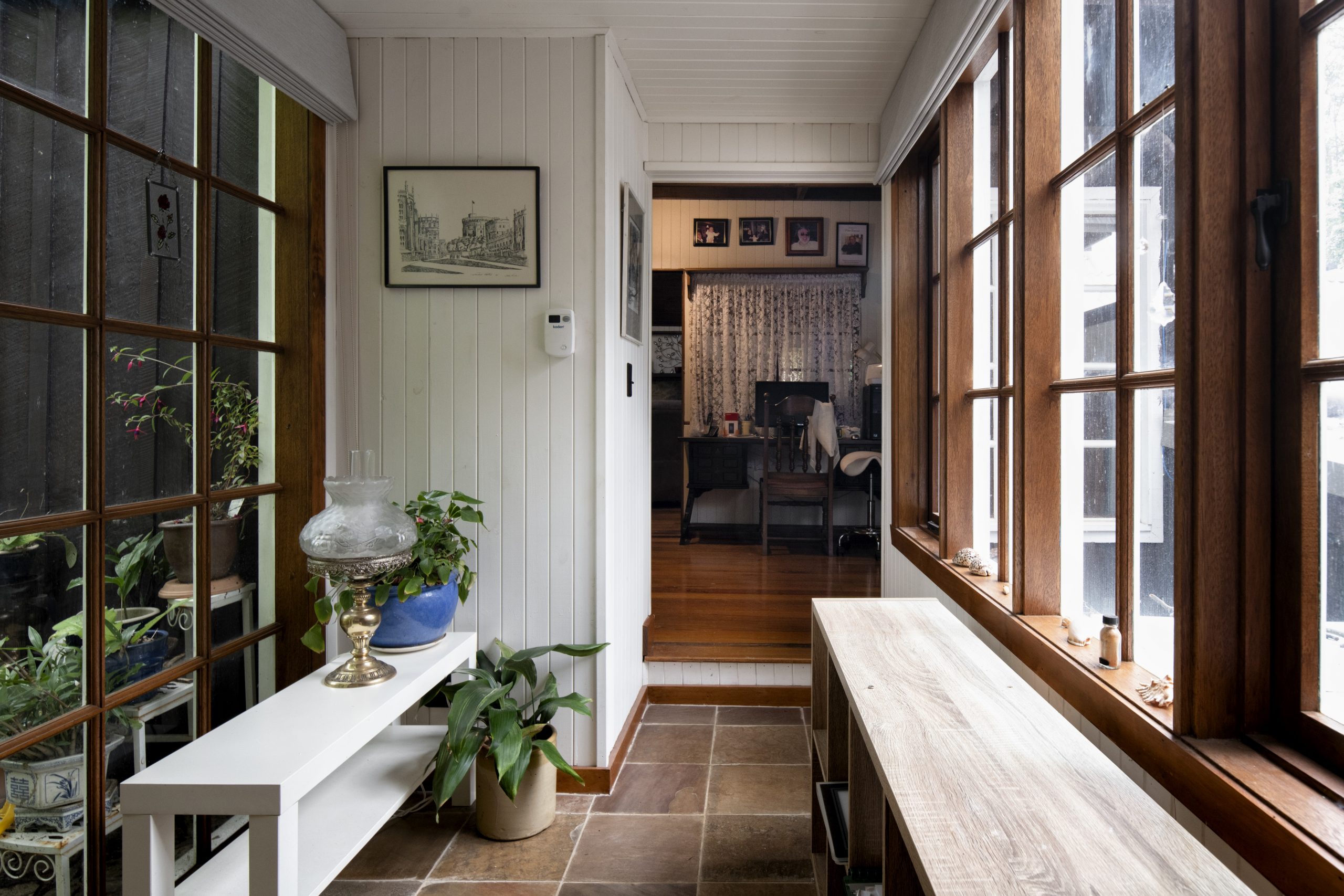Heritage Listing: Victorian Heritage Register
Hurst is a cottage at Bickleigh Vale, the village designed by renowned landscape architect Edna Walling. It has been sensitively extended in a manner that relates closely to the original house and maintains the careful integration with the garden and wider landscape setting.
Download a printable copy of Hurst at Bickleigh Vale Case Study (PDF 2MB).
Significance of the place
Bickleigh Vale is a landscaped village in Mooroolbark, created by Edna Walling between 1920 and 1940. It was designed as a unified, integrated development, with Walling herself living in the village for much of her working life and playing an ongoing role in its development. The cottages are tucked into a densely planted, undulating landscape, with shared paths and roads. Today the village has more than 30 properties and retains the character initiated by Walling and the other early inhabitants.
Listed in the Victorian Heritage Register, Bickleigh Vale is identified as being of aesthetic, architectural, historical and scientific (horticultural) significance. It is recognised as the largest major work of Walling, a key figure in Australian landscape architecture, and one of the first women in the field. The citation describes the aesthetic quality of the landscape as encompassing “the apparently casual nature of the internal lanes, the character of the mature plantings, the continuous nature of the landscaping which permits glimpses of carefully sited cottages, and the complementary relationship between exotic and Australian plants.” The horticultural significance recognises the presence of many significant trees and plantings, while the architectural significance is conferred by the cottages and the hard landscaping elements, such as paving, stone walls, steps, arbours and ponds, all of which share harmonious combinations of materials.
Hurst was built in the early 1930s for Edna Walling’s gardener. It is one of the sixteen houses and outbuildings in the village that were designed or approved by Walling, and it shares an aesthetic character, material palette and landscape with other residences in the village. A number of the trees on the property are also individually significant, including a Malus x purpurea ‘Sonningensis’, a crabapple selected by Walling from her own garden at Sonning.
Bickleigh Vale is also recognised by The National Trust, having been declared a classified landscape in 1978.
The connection to garden and landscape, and the formal and material relationship to other cottages, is fundamental to the heritage values of the home. Bottom The cottage, link and new extension.
Opportunities
Bickleigh Vale is a much-loved village, with a highly engaged group of residents dedicated to maintaining the roadside landscape and garden environment. The established visual and aesthetic language of the cottage, and the village as a whole, provided the cues for the extension. The palette of materials used in Hurst and across the village – dark stained timber, casement windows and prominent stone chimneys, and rustic stone landscape elements – could be incorporated into the extension to ensure that it sat comfortably in the existing setting. The layout of the garden meant that the extension could be accommodated without removing significant trees or shrubs – only a Juniperus and Cotoneaster were lost.
Challenges
Hurst was a small, one-bedroom cottage, with a mezzanine above the kitchen. The design challenge involved adding a new room in an extension that was appropriate to both the cottage and garden and the wider village and landscape setting. The main challenge experienced by the owner was ensuring that construction of the addition was appropriate to the house in every detail. This involved working closely with the builders and contractors to ensure that materials and craft were carried through to every level, rather than using more contemporary methods.
Approach and Outcome
The new addition sits on the northeast side of the house. The form and materials of the extension closely match the existing cottage, and from the outside they read as a complementary pair, connected by a new, lower height passage. This passage and the addition step down the gently sloping site. Inside, the original bedroom has been converted into a study, while the new bedroom reiterates the character and high ceilings of the main living spaces. The connecting passage creates a more intimate intermediary space between new and old. It also provides a new link between garden and house – a multi-paned, fully glazed wall and door open to the garden, while the internal stone floor of the passage connects it into the network of exterior stone paths. This is a modest, carefully judged extension, which improves the amenity of the home while retaining the intent and heritage values of this special place.
Lessons
- The garden, landscape and village setting – including shared materials and forms – are fundamental to the heritage values of the property, and an important consideration in designing the extension.
- A small glazed link is an effective way to integrate a new extension while keeping it visually separate from and minimising demolition to a heritage house.
- Responding closely to the form, materials and spatial qualities of the existing cottage creates an addition that sits easily and quietly in the village landscape setting.
Project Team
Architect: Sue Mitchell
Structural Engineer: Ronald Popper




